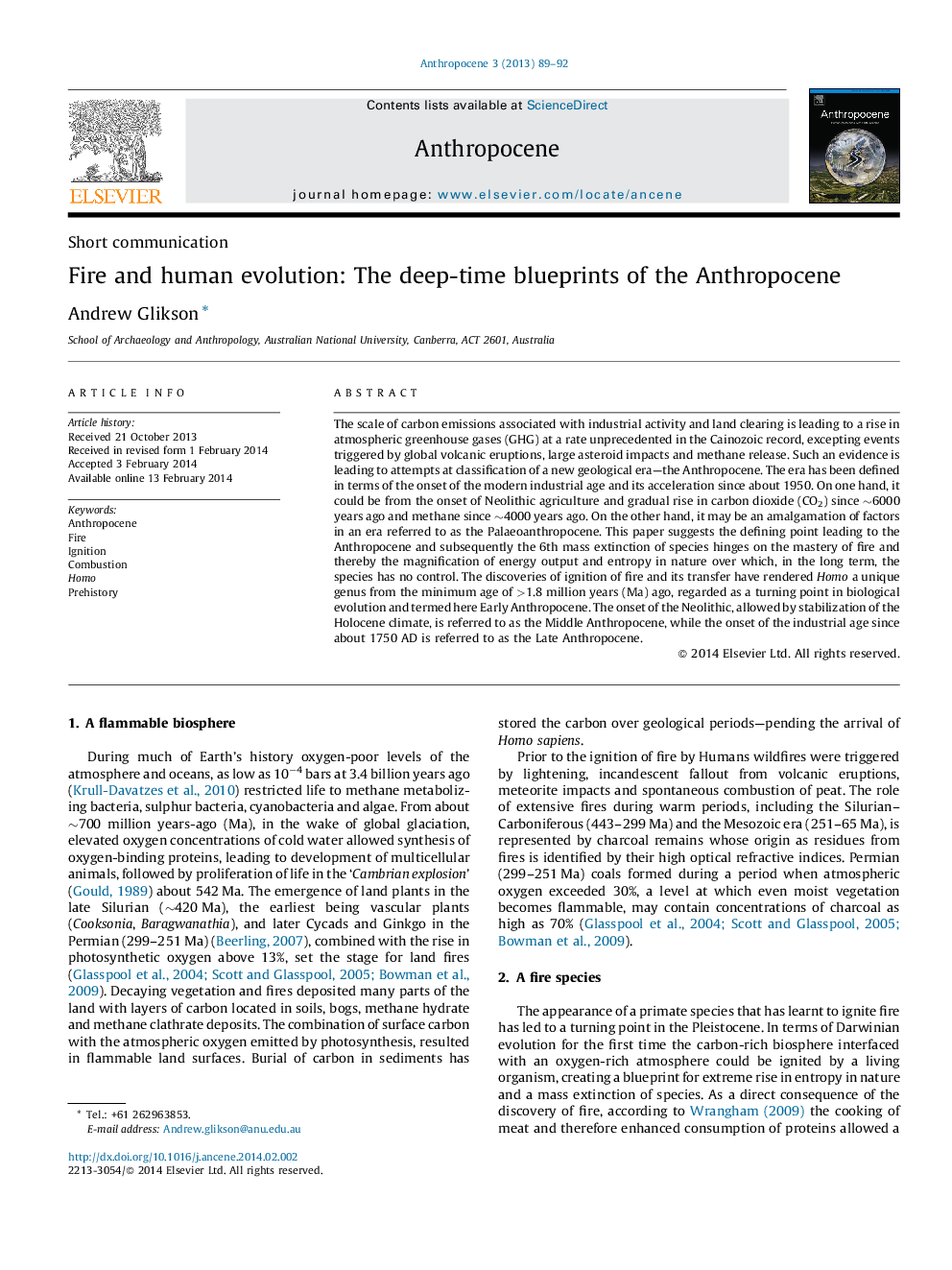| کد مقاله | کد نشریه | سال انتشار | مقاله انگلیسی | نسخه تمام متن |
|---|---|---|---|---|
| 4461913 | 1621522 | 2013 | 4 صفحه PDF | دانلود رایگان |

The scale of carbon emissions associated with industrial activity and land clearing is leading to a rise in atmospheric greenhouse gases (GHG) at a rate unprecedented in the Cainozoic record, excepting events triggered by global volcanic eruptions, large asteroid impacts and methane release. Such an evidence is leading to attempts at classification of a new geological era—the Anthropocene. The era has been defined in terms of the onset of the modern industrial age and its acceleration since about 1950. On one hand, it could be from the onset of Neolithic agriculture and gradual rise in carbon dioxide (CO2) since ∼6000 years ago and methane since ∼4000 years ago. On the other hand, it may be an amalgamation of factors in an era referred to as the Palaeoanthropocene. This paper suggests the defining point leading to the Anthropocene and subsequently the 6th mass extinction of species hinges on the mastery of fire and thereby the magnification of energy output and entropy in nature over which, in the long term, the species has no control. The discoveries of ignition of fire and its transfer have rendered Homo a unique genus from the minimum age of >1.8 million years (Ma) ago, regarded as a turning point in biological evolution and termed here Early Anthropocene. The onset of the Neolithic, allowed by stabilization of the Holocene climate, is referred to as the Middle Anthropocene, while the onset of the industrial age since about 1750 AD is referred to as the Late Anthropocene.
Journal: Anthropocene - Volume 3, November 2013, Pages 89–92